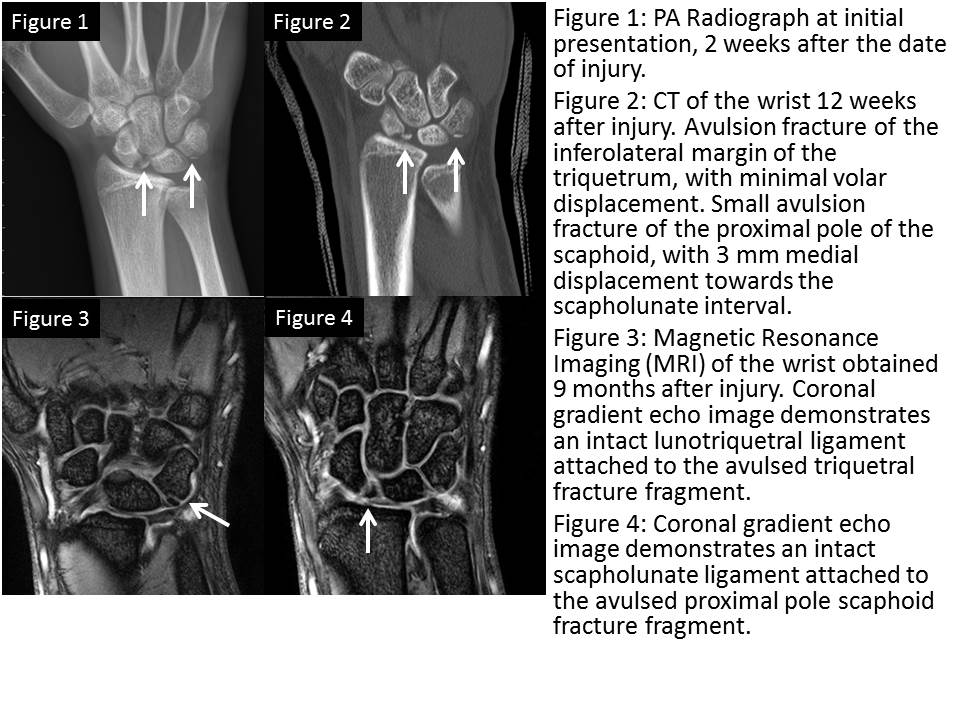Hospital: University of Miami, Hospital Regional Universitario, Hospital Donostia.
Nº: C2019-749
Aut@r o Autores: J. Jose, C. Simon Bejarano, J. Perez, A. Patel, C. Barrera, A. Ugarte Nuno.
Presentación
15-year-old male injured his wrist during football practice. Radiographs demonstrated avulsion fractures to the proximal pole of the scaphoid and inferolateral aspect of the triquetrum. The patient was immobilized with an upper extremity thumb spica cast, however, there was persistent non-union of both fractured segments. CT and Magnetic resonance imaging confirmed avulsions at the site of the scapholunate and lunotriquetral ligaments, with both ligaments relatively intact. At the last follow-up, nine months after the initial injury, the patient had a normal clinical exam, with no pain and full wrist range of motion despite fracture non-union at both locations.
Discusión
Fractures to the scaphoid and triquetrum are the first and third most common carpal fractures respectively, and avulsion fractures through these bones are not uncommon. However, multiple carpal avulsion fractures involving the perilunate ligaments have not been reported and this case presents a unique combination of avulsion fractures through both the scaphoid and triquetrum in the same carpus. At presentation, initial clinical assessment and radiographic analysis were consistent with small, minimally displaced fractures at the triquetrum and the scaphoid. Due to the relative stability of each fracture pattern, the patient was initially treated nonoperatively. Following continued radiograph-confirmed evidence of non-union, CT and MRI were obtained to further elucidate the etiology of the injury. Interestingly, there was only mild heterogeneity in the SLL and LTL reflecting sprain, without discrete tear. In order to involve both the triquetrum and the scaphoid, however, we suspect that the injury most likely involved a component of wrist hyperextension in ulnar deviation as well as radial deviation. Given the MRI finding of dorsal extrinsic ligament sprain, it is likely that that this patient had a post-traumatic perilunate dislocation that had spontaneously reduced, without ligamentous tear. Cases of persistent fracture non-union in the carpal bones are typically treated with surgical fixation of the fractured segment. In our case, this was not a realistic option for several reasons. Primarily, the scaphoid would most likely not tolerate screw fixation given the comminution and small size of the displaced proximal pole fragment, the fractured triquetrum segment similarly was too small to fixate operatively. Moreover, the patient had a full clinical resolution of symptoms with return to activity despite nonunion of the fractures and sprain of both the LTL and STL.
Conclusión
The reported case is a rare wrist injury that has not been previously described in the literature.
Bibliografía
- Sherman GM, Seitz WH. Fractures and dislocations of the wrist. Curr Opinion Orthop, 1999,10:237-5 - Brøndum V, Larsen CF, Skov O. Fracture of the carpal scaphoid: frequency and distribution in a well-defined population. Eur J Radiol. 1992,15(2):118-2 -


